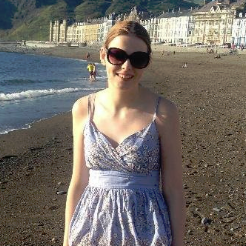Back in March, we interviewed Sue Black, a Professor of Computer Science and Technology Evangelist at Durham University, who told us she believes female role models in the sector aren’t discussed nearly as often as they should be. She gave Stephanie ‘Steve’ Shirley as an example, and, having been ashamed to admit that I hadn’t heard of her myself at the time, I thought I’d highlight Steve Shirley and a selection of some other inspirational yet criminally under-recognized female computer scientists in modern history, who deserve to be remembered as role models for women in tech today.
Steve Shirley
Starting with Sue Black’s own example, Dame Stephanie ‘Steve’ Shirley arrived in the UK as a child refugee of the Kindertransport in 1939 and went on to found her own software company, Freelance Programmers, in 1962. She adopted the name ‘Steve’ to help her in the male-dominated business world, having found that company letters using her real name were not responded to.
While planning to start a family, she decided to create part-time job opportunities for women with children, and almost exclusively employed women until the Sex Discrimination Act of 1975 made this illegal. Among her team’s projects was Concorde’s black box flight recorder.
Shirley retired in 1993 and has since focused on her philanthropy, having set up The Shirley Foundation in 1986, which aims to support medical research in the field of autism spectrum disorders, and is now among the top-50 grant-giving foundations in the UK.
Amongst other honors, Shirley was appointed an OBE (Officer of the Order of the British Empire) in 1980 for her services to industry, and was also the first female President of the chartered British Computer Society, as well as the UK’s Ambassador for Philanthropy in 2009.
Joan Clarke
Amongst other campaigns, Professor Sue Black successfully crusaded to crowdfund to restore Bletchley Park, a 19th-century mansion which was the top-secret center of decrypting enemy messages during World War Two, as featured in the 2014 film The Imitation Game. One of the codebreakers was Joan Clarke, who worked alongside fellow cryptanalyst Alan Turing.
Clarke studied at the University of Cambridge in 1936, achieving a double first degree in mathematics, although she was prevented from receiving a full degree as Cambridge only awarded these to men until 1948. One of her professors at Cambridge noted her mathematical ability and recruited her to the Government Code and Cypher School (GCCS) at Bletchley Park, where she initially undertook clerical work, earning far less than her male counterparts. However, her talents soon shone through and she was promoted to Linguist grade in recognition for her hard work, as there were no protocols in place for a senior female cryptanalyst (despite not knowing another language – much to Clarke’s enjoyment when she filled forms in with ‘grade: linguist, languages: none’).
Working at a time when female cryptanalysts were unheard of, Clarke tirelessly encrypted enemy messages from the German navy in real-time, with her messages resulting in military action being taken almost instantly, therefore saving countless lives from potential U-boat attacks.
Unfortunately, Clarke’s efforts have been almost forgotten by history, in part due to the secrecy surrounding the work at Bletchley Park, and also as Clarke herself never sought the spotlight, although she was awarded a Member of the Order of the British Empire (MBE), in 1946 in recognition of her work.
Margaret Hamilton
Next in our look at amazing female computer scientists you probably haven’t heard of, Margaret Hamilton is one of the first computer software programmers, and is credited with coining the term ‘software engineering’ to describe her work at MIT’s Instrumentation Laboratory.
Hamilton, who studied mathematics at the University of Michigan and Earlham College, graduated in 1958 and first worked as a high school math teacher before joining MIT to work on software to predict the weather. In 1961 Hamilton joined the Lincoln Laboratory at MIT, working on the Semi-Automatic Ground Environment (SAGE) project, the very first US air defense system, in which she created software to help search for unfriendly aircraft.
Her efforts in this project led her to joining the Instrumentation Laboratory, where she led a team credited with developing the in-flight software for the Apollo space program, with Hamilton personally focusing on programming software to detect system errors and recover information in the event of a computer crash. Working at a time when software engineering courses simply didn’t exist, Hamilton and her team had to fix problems on their own, and her work was crucial in making the first moon landing, Apollo 11, possible in 1969.
Grace Hopper
Rear Admiral Dr Grace Murray Hopper was one of the most influential computer scientists of all time, famous for her ground-breaking work in developing the first accessible computer programming languages written in English.
Hopper was noted for her curiosity since early childhood, having been caught by her mother dismantling seven alarm clocks to see how they worked (she was limited to one afterwards). She first studied at Vassar College, a liberal arts college, before completing her master’s and PhD in mathematics at Yale University, graduating in 1934.
After the US’ entry into World War Two, Hopper tried to enlist in the navy, but was rejected due to her age and small size. However, she persisted and eventually received a waver in order to join the Women’s Reserve. Her perseverance was also notable in her programming work, as she was told very quickly that her idea for a new programming language using entirely English words couldn’t work because computers didn’t understand English. It took years before her idea was accepted, but she persisted and the COBOL (Common Business Orientated Language) has gone on to become the most widely used business language to date. Amongst other awards, Hopper was granted the Society of Women Engineers Achievement Award in 1964, and has earned the nickname ‘Amazing Grace’.
The ENIAC Women
Last but not least in our look at female computer scientists who changed the world, the six ‘ENIAC Women’, Fran Bilas, Jean Bartik, Ruth Lichterman, Kay McNulty, Betty Snyder, and Marlyn Wescoff, programmed the first all-electronic, programmable computer, the ENIAC (Electronic Numerical Integrator and Computer). The women, who were helped to join the field by the labor shortage at the time, had to learn how to program using only logical diagrams, as no programming languages yet existed.
The women completed the ENIAC in 1945 and it was first put to use in December that year, causing great fanfare with the press, who referred to it as a ‘giant brain’. Sadly, most of the women didn’t receive recognition for their work during their lifetimes, with historians at first mistaking them for ‘Refrigerator Ladies’ (models posing in front of the computer). However, it’s important to recognize that this large, clunky machine was the predecessor of modern general-purpose computers we use on a daily basis today, and we have the ENIAC women, amongst others, to thank.
Want more content like this? Register for free site membership to get regular updates and your own personal content feed.

